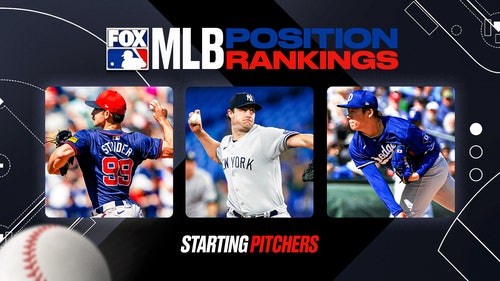
MLB studying headgear for pitchers
Major League Baseball has seen enough.
The league, alarmed by pitchers suffering serious head trauma when struck by batted balls, is trying to address the problem.
Specifically, baseball is looking into protective headgear that would help pitchers avoid catastrophic injuries, according to major league sources.
While some youth leagues and high schools require pitchers to wear helmets, MLB does not intend to take such an extreme step, sources say.
Instead, the sport will investigate existing products, many of which are worn under a pitcher’s cap and would not dramatically change the cap’s appearance.
Furthermore, Baseball’s Medical Advisory Committee plans to tackle the issue when it gathers at the winter meetings in December.
The committee includes MLB’s medical director, Dr. Gary Green, as well as representatives from baseball trainers, doctors and strength and conditioning coaches.
Baseball’s response stems in part from frightening incidents involving Colorado right-hander Juan Nicasio and Oakland righty Brandon McCarthy in the past 13 months.
Nicasio, struck in the left temple by a line drive on Aug. 5, 2011, suffered a fractured skull that produced bleeding on the brain — and a broken neck on his subsequent fall.
McCarthy, after getting hit by a line drive on Sept. 5, required two hours of brain surgery after suffering an epidural hemorrhage, skull fracture and brain contusion.
A fatality occurred from a similar incident involving a minor-league coach — Mike Coolbaugh, coaching first base for Colorado’s Double-A affiliate, was killed when a line drive struck him in the neck on July 22, 2007.
Major league general managers decided the following offseason to require first- and third-base coaches to wear batting helmets. Coaches, though, are not players. Pitchers likely would resist anything but the most gradual change.
Players, fans and media teased Mets third baseman David Wright when he wore a large protective helmet in 2009 upon returning from a concussion.
Wright ditched the “Gazoo” helmet after only two days, saying it was uncomfortable.
For pitchers, one compromise could be the placement of a foam or Kevlar sheet inside a player’s cap.
NFL players already use supplemental helmet protection designed by Unequal Technologies. Other companies such as Evoshield offer protective guards for other parts of the body that could be adapted for pitcher’s caps.
A helmet still would offer the best possible protection, but such a transition likely would need to start at the youth level and become common in amateur baseball before being adopted by the majors.
Young pitchers, once accustomed to wearing helmets, might be more open to using them as they ascended through the ranks.
To achieve more immediate change, baseball almost certainly will need to involve the players’ union, which could help educate pitchers on the merits of wearing protective headgear.
All of that, however, is in the future.
The first step for baseball was to acknowledge that its pitchers are in danger. Now, finally, the true work can begin.










